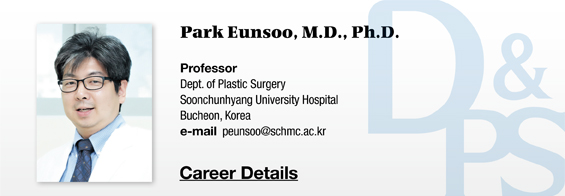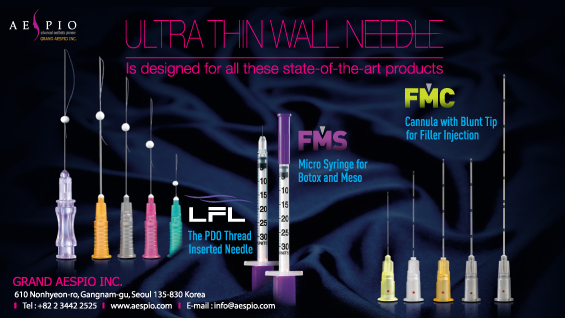▶ Previous Artlcle : #8. Platelet Rich Plasma
Platelet-rich plasma (PRP) can produce a lot of growth factors as it has a higher platelet density than whole blood. The interaction of various growth factors is also a benefit of PRP, making it preferable in extensive clinical applications for tissue healing and regeneration. However, a standard preparation protocol of PRP has not been established yet, and the issue of efficacy has been raised due to the variability of the preparation method.
[Advertisement] ULTRA THIN WALL NEEDLE – Manufacturer: AESPIO(www.aespio.com)
Lately, cell-assisted lipotransfer is being widely used to improve fat graft survival by separating pure adipocytes and injecting them with adipose-derived stem cells. Enhancing the fat graft survival with PRP has been attempted in the past, but reports so far have been conflicting.
Several animal tests reported a higher graft survival rate. Sadati et al. conducted facial lipoinjection with PRP and reported clinical improvement of fat graft survival, significantly enhanced volume maintenance and high satisfaction in 6 months among patients who received PRP, compared to those who did not. Cervelli et al. also reported that fat graft co-administered with PRP to hollow areas in the human face is beneficial for improving the graft survival and volume maintenance, compared to fat graft alone. On the contrary, Salgarello et al. reported that this technique is not effective for human breast augmentation.
It has been reported in previous studies that the surgical outcome may vary depending on the PRP to fat ratio. Many studies have mixed autologous fat and PRP in ratios of 9:1 (10%), 4:1 (20%) or 2:1 (33%). Among these, ratios of 9:1 and 4:1 were reported to be ineffective, whereas 2:1 was reported to be effective and thus an appropriate ratio.
Theoretical Basis for the Improved Graft Survival
So far, no vivo studies on humans have reported clear evidences to support a better graft survival rate. Nevertheless, the possibility of PRP affecting the survival of fat graft is still theoretically plausible for the following reasons:
First, the aspirated fat with an isotonic solution called Klein’s solution still creates dilutional hypotonic environment in the recipient site, because the Klein’s solution mixed with the fat graft dilutes the protein concentration in the recipient site tissue and decreases colloid osmotic pressure. This causes edema and destroys adipocytes, thereby reducing the volume of the fat graft. However, PRP, which contains albumin, globulin and fibrinogen, can prevent reduction in colloid osmotic pressure in the recipient site and, ultimately, create a good environment for fat engraftment.
Second, PRP provides nutrition to the transplanted adipocytes for 48 hours after transplantation until achieving vascularization.
Third, growth factors and various other active materials produced by activated platelets are capable of stimulating the healing process and vascularization in the recipient site.
Centrifugation of anticoagulant-treated blood results in separation into three layers. The middle buffy coat fraction accounts for 1% of the total volume and is composed of 94% platelets, 6% red blood cells, and 1% white blood cells. The remaining 6% of platelets are present in the red blood cell button immediately below the buffy coat, most of them being large and young platelets.
The important aspects of PRP preparation are effectively separating as much platelet volume as possible and preventing platelet damage or early release of active materials during the separation process. Platelets can be damaged in the process of blood collection, by the velocity and duration of centrifuge, and during manual separation.
-To be continued tomorrow-
▶ Next Artlcle : #9-2. Preparation of Platelet-Rich Plasma





















